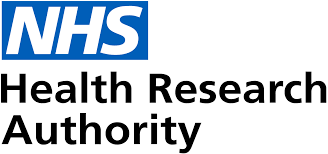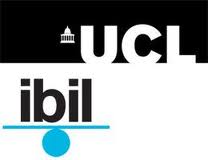 On 28 March 2024, the UK National Health Service’s Health Research Authority published a draft of a new template agreement. See https://www.hra.nhs.uk/about-us/news-updates/call-for-comments-on-new-study-agreement-template/
On 28 March 2024, the UK National Health Service’s Health Research Authority published a draft of a new template agreement. See https://www.hra.nhs.uk/about-us/news-updates/call-for-comments-on-new-study-agreement-template/
That webpage explains the purpose of the new agreement in the following terms:
The draft Investigator Initiated Study Agreement is proposed for future use between non-commercial sponsors and commercial organisations providing support for investigator-initiated trials.
These are research studies where the research idea comes from a non-commercial sponsor but that also receive commercial support.
Although non-commercial sponsors already work with commercial companies in this way, it can take a long time to get agreement because there isn’t a standard contract available.
The Investigator Initiated Study Agreement provides a standard contract agreement template for this type of research.
Unlike many clinical trial agreements where a pharmaceutical or medical device company acts as sponsor of the trial, and commissions a hospital to test the company’s product on the hospital’s patients, in this case the hospital is both acting as sponsor and performing the trial. The company’s role may be to supply free quantities of its products for use in the trial and/or to provide financial support for the trial. But an important difference from “commercial” trials is that the company is not taking on the regulatory responsibilities of being the sponsor of the trial.
IP Draughts has helped universities and hospitals to negotiate agreements of this kind over many years, and recognises the value of having a template agreement. He suspects it will be more of a starting point for negotiations rather than a “take it or leave it” non-negotiable document, given the variety of factual situations where an agreement of this kind may be used. But he is puzzled. The website linked above talks of “non-commercial sponsors” which presumably would include universities. But the draft template agreement is clearly focused only on the situation where an NHS Trust sponsors the trial, and there are no optional clauses to make it suitable for universities. For example, a clause headed insurance states “Institution confirms that it is a member of and throughout the duration of this Study shall maintain its membership of the NHS Resolution Clinical Negligence Scheme for Trusts.” There is no alternative clause stating that the university sponsor will maintain a clinical trials insurance policy. This may reflect the fact that the template has been drafted by “the R&D Forum contracts group, who are NHS contract managers, with support from the UK Four Nations contracts leads, who are responsible for maintaining the UK model research agreements…” Perhaps in the next round of the document we will see more alternative clauses that enable it to be used with non-NHS-Trust non-commercial sponsors.
IP Draughts has read through the draft template agreement. As an exercise in drafting, it is not impressive. IP Draughts has seen many templates that have been “drafted by committee” and end up being sub-optimal. He feels strongly that where a group works on a draft agreement, there needs to be a “scribe” who can take the group’s decisions on principles and convert them into a coherent and well-thought-through text. This is an important part of developing a robust, long-term template agreement.
IP Draughts suspects this has not happened in this case. Perhaps there was no budget. To do a decent job and be involved in discussions and iterations, a specialist contract lawyer would likely charge at least £15,000 to £20,000.
For whatever reason, in places the text of this draft template agreement is unclear, inaccurate, wordy and inconsistent. This makes it less likely that a major pharmaceutical company would find the terms acceptable. IP Draughts noted too many problems to mention them all here, but here are a few:
- Legal mistakes. Imposing obligations on someone who is not a party to the agreement, eg CI in clause 3.5, auditor in clause 6.2, or Company Indemnitee in clause 12.4. These errors could be fixed with more skillful drafting.
- Drafting inconsistencies. Several inconsistencies between the detailed wording of the three indemnities in clause 12, which appear to be due to use of clauses from different sources (e.g reference to ex gratia payments in one of the indemnities but not the others). This is lazy and needs to be cleaned up. More importantly, it is not stated whether the caps and exclusions of liability in clause 12 apply to the indemnities.
- Inadequate obligations, e.g. clause 10.6 states that the Company warrants that the Product will be “fit for its intended purpose”. This is fairly meaningless without further detail on what that purpose is, and is likely to be resisted by a large pharma company.
- Confused and questionable statements, eg as to whether Company is receiving personal data when it gets pseudonymised data without the key (see differences in clause 11.13, where second sentence says no, third sentence says likely no but question of fact). Make your mind up!
- Defined terms that are not defined (eg Location in clause 3.8.2). All capitalised terms should be checked to see if there is a definition.
- Inconsisent usages, eg the agreement can’t decide whether to say “Institution” or “the Institution” or whether a party “shall”, “will” or “agrees to” perform obligations, or whether to say “6 months” or “six (6) months”. While these inconsistencies may not prejudice the meaning, they show a lack of care and attention to detail. They should be cleaned up.
- US-style legalese that, in IP Draughts’ view, has no place in an English/Scots/Northern Ireland law agreement, eg “in consideration of the above premises and subject to the terms and conditions stated herein…” and “This Agreement shall inure to the benefit of and be binding upon each Party, its successors and assigns.”
- Focusing on some legal issues but not others, e.g. clause 10.3 headed “Fair Market Value”, which reads: “Each Party acknowledges that this Agreement has been negotiated in an arm’s-length transaction and has not been determined in any manner with regard to any implicit or explicit agreement to provide favourable procurement decisions with regard to Company’s products, or to the value or volume of any business or referrals generated between the Parties.” This clause focuses on procurement policy, whereas IP Draughts would have been more concerned about fair market value in relation to compliance with subsidy control law in the grant of IP licences, which is not addressed.
All of these errors can be fixed but together they provide a case study in poor technical drafting. The draft template is out for consultation, so hopefully the drafting will be improved in a subsequent round.
 Last week, at the UCL Faculty of Laws in London, IP Draughts (together with around 30 expert speakers) ran the 11th annual outing of a five-day course, IP Transactions: Law and Practice.
Last week, at the UCL Faculty of Laws in London, IP Draughts (together with around 30 expert speakers) ran the 11th annual outing of a five-day course, IP Transactions: Law and Practice.
 On 28 March 2024, the UK National Health Service’s Health Research Authority published a draft of a new template agreement. See
On 28 March 2024, the UK National Health Service’s Health Research Authority published a draft of a new template agreement. See  A dispute between a “big name” academic scientist and an entrepreneur over their spinout company went to arbitration.
A dispute between a “big name” academic scientist and an entrepreneur over their spinout company went to arbitration. Regular readers of this blog may recall that, earlier this year, IP Draughts organised a one-day conference at UCL on the implications of the High Court’s judgment in the case of Oxford University Innovation v Oxford Nanoimaging Limited [2022] EWHC 3200 (Pat).
Regular readers of this blog may recall that, earlier this year, IP Draughts organised a one-day conference at UCL on the implications of the High Court’s judgment in the case of Oxford University Innovation v Oxford Nanoimaging Limited [2022] EWHC 3200 (Pat).

You must be logged in to post a comment.